Measuring Weather with WindBorne Systems and CesiumJS
As climate change spurs more frequent, violent weather, accurate weather forecasts are becoming increasingly critical. WindBorne Systems is working to collect the data that no one else can reach. Their balloons fly hundreds of times longer than traditional weather balloons, and they visualize those flights in CesiumJS.
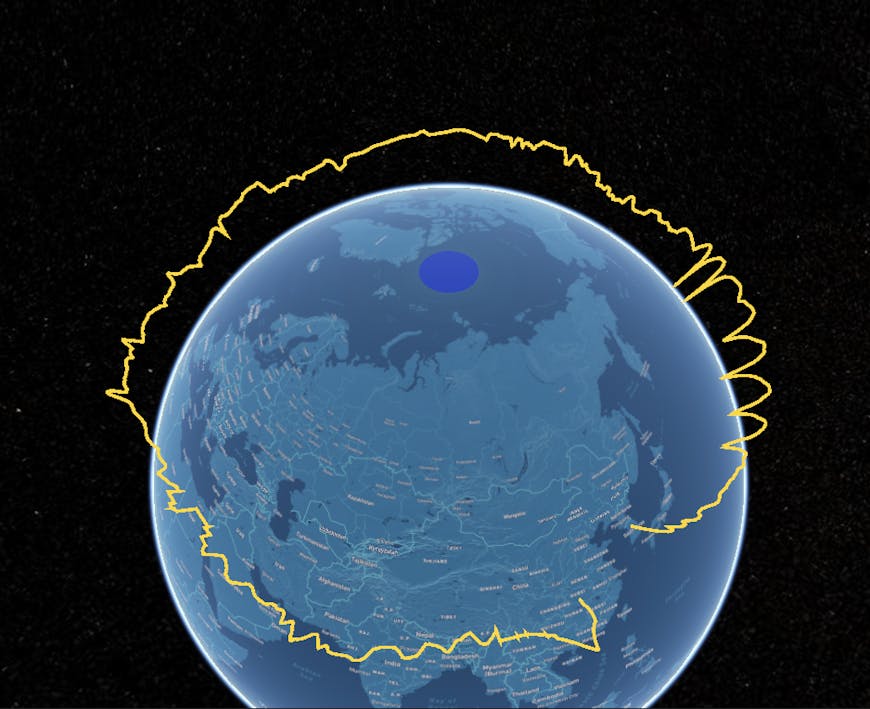
A WindBorne Systems flight, visualized in CesiumJS.
To this day, weather prediction relies on data from balloons. Nearly half a million are launched every year, each carrying sensors to measure temperature, humidity, and pressure. These balloons fly for about 2 hours until they get too high and burst.
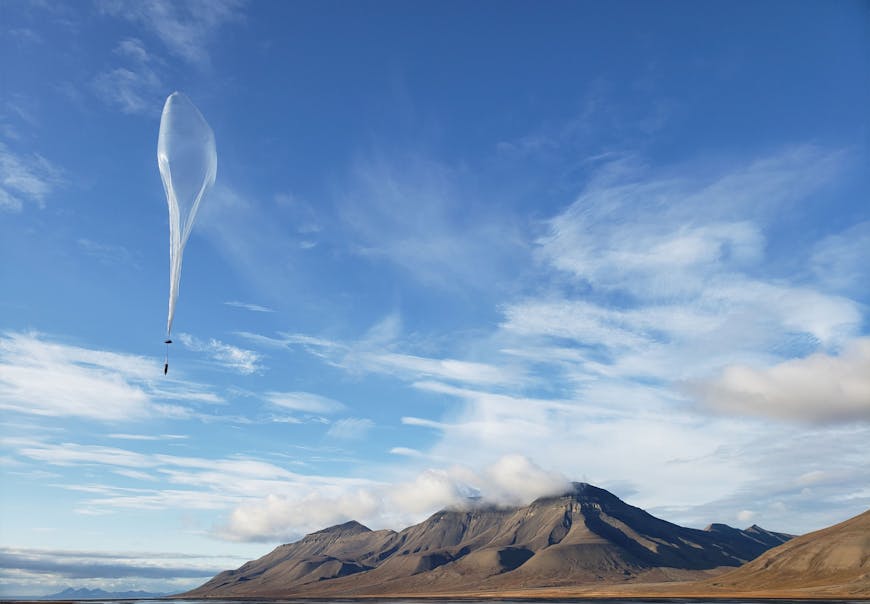
WindBorne Global Sounding Balloon in the air over the Svalbard Islands, Norway. Courtesy of WindBorne Systems.
WindBorne Systems has invented a new system to collect this data. Dynamic controls on their balloons allow them to adjust altitude in real time, releasing gas when a balloon gets too high and dropping ballast when it gets too low. Unlike traditional weather balloons, which burst 2 hours into flight, WindBorne balloons can stay aloft for more than 400 hours.
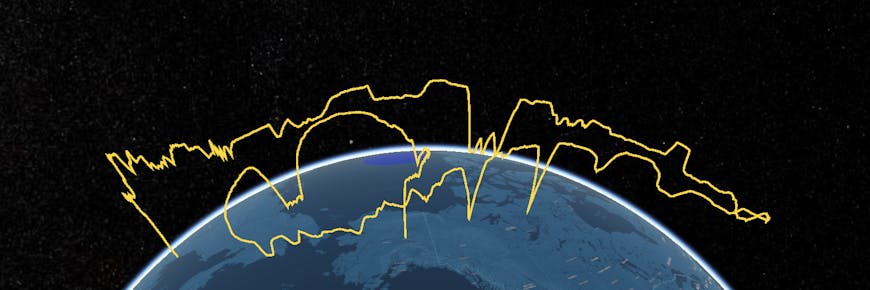
Here’s one balloon’s path in the Arctic, visualized in CesiumJS. WindBorne Systems has exaggerated the height 100x to make it easier to see.
Over that time, a balloon may travel significant distances, both vertically and horizontally. In March 2022, one of their balloons circumnavigated the globe. During that flight, it successfully flew over the Alps and Himalayas, and also maneuvered to avoid Russian and Ukrainian airspace.
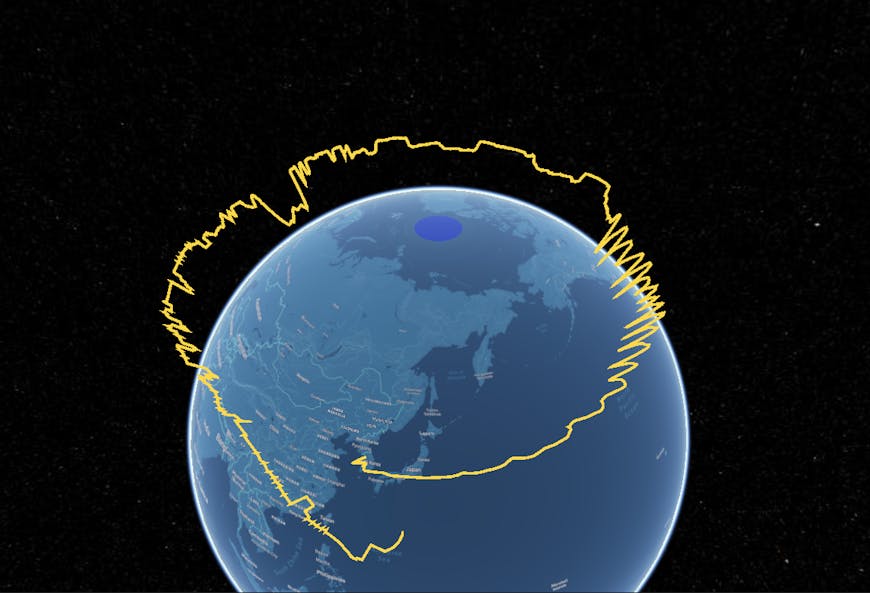
This 3D visualization of a flight of Balloon W-273, which circumnavigated the globe, shows the altitude adjustments as well as the balloon’s drift in its flight.
Despite flying without an engine, these balloons can have remarkable control over their flight paths, just by adjusting altitude. In fact, by adjusting a balloon’s altitude to fly in wind currents moving in a desired direction, WindBorne Systems is able to steer their balloons. The 3D nature of these flights makes CesiumJS the ideal visualization tool for tracking a balloon’s path.
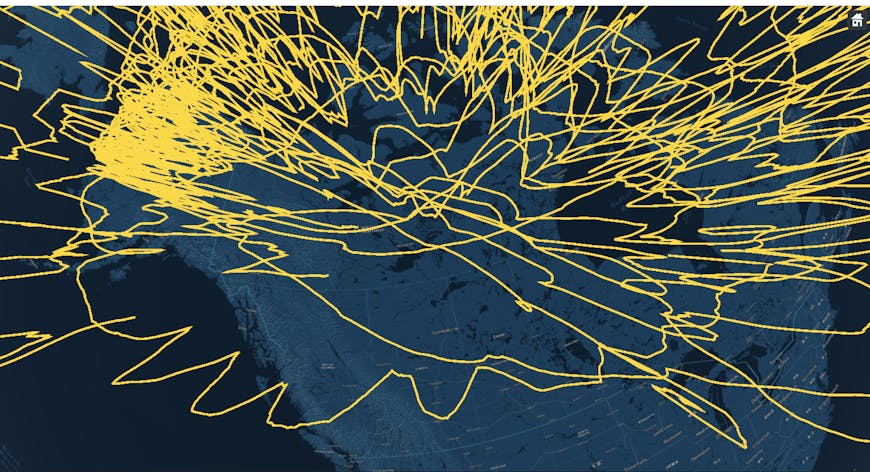
By making multiple ascents and descents, WindBorne Systems is able to collect a more complete picture of atmospheric conditions.
Capturing these flights in 2D would offer very little insight, since altitude is just as important as latitude and longitude. The 3D view available in Cesium, however, provides the whole picture. CesiumJS was built for accuracy at global scale, from the WGS 84 ellipsoid to terrain to the atmosphere and sun position. That full picture of Earth's surface and atmosphere supports true 3D visualizations.

In early 2022, WindBorne Systems measured the formation of atmospheric rivers over the Pacific Ocean, systems which bring rain to the West Coast. That campaign included 65 balloons that collected data over more than 11,500 vertical km of profiles, and more than 675,000 km of ground track.
These balloons face extreme conditions: vicious lightning, high winds, and temperatures down to -80°C.
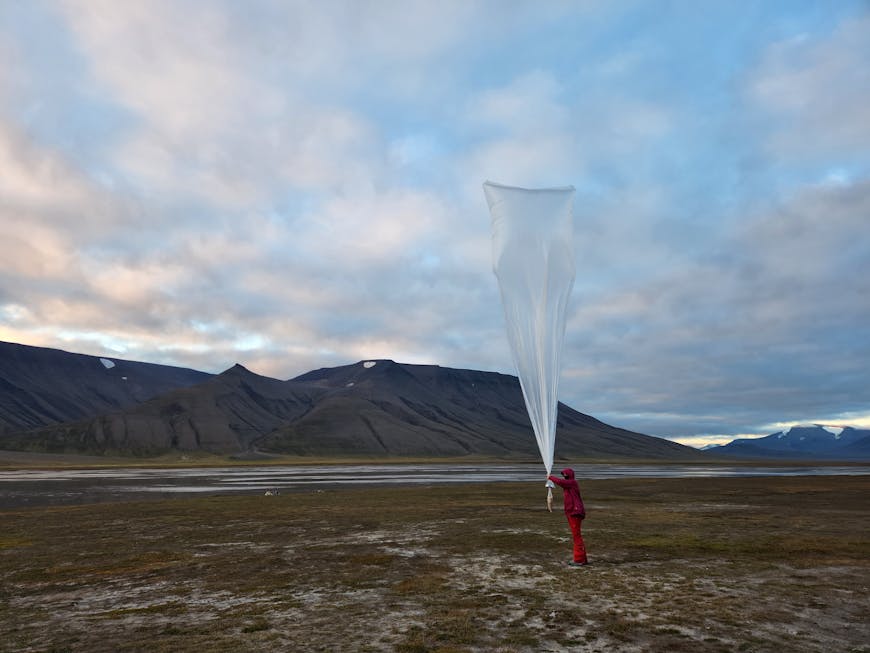
WindBorne’s 362nd Global Sounding Balloon on the ground, shortly before release. Courtesy of WindBorne Systems.
Last month, WindBorne Systems even sent a balloon into Hurricane Ian. With zero risk to human pilots, the balloons have a huge advantage over the manned aircraft that typically take measurements of hurricanes.
.png?auto=compress%2Cformat&w=870)
The flight path of a WindBorne Systems balloon in Hurricane Ian. Providing insights into dangerous storms like these will allow forecasters to provide more specific, reliable guidance to the public.
WindBorne Systems’ balloons provide access to areas like the Arctic and open ocean that are highly affected by climate change but are currently poorly observed. And providing better data about wind and other conditions will help protect lives and property against wildfires, cyclones, and other extreme weather.
To visualize your own data in Cesium, get started with a free Cesium ion account.